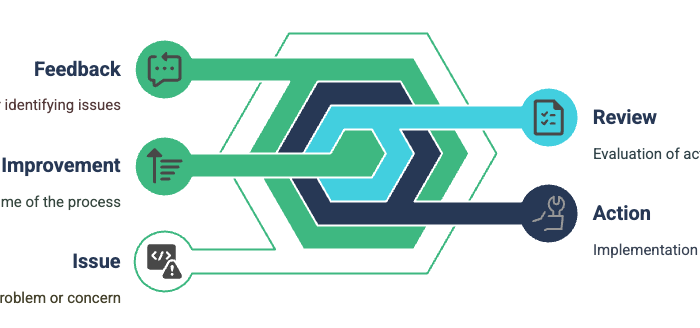Here’s what you need to do to access Restricted Tenders
A competitive procurement method that limits requests for tenders to suppliers, contractors or service providers already shortlisted by a procuring entity.

By definition, Restricted Tendering is a competitive procurement method that limits the request for tenders to a number of suppliers, contractors or service providers who are shortlisted through either a pre-qualification or invitation by the procuring entity. In other jurisdictions, this procurement method is also referred to as Limited Bidding and Selective Tendering.
In Kenya, a public procuring entity may undertake a pre-qualification of suppliers prior to implementing an alternative procurement method (other than the preferred open tender procurement method) with the aim of identifying the best qualified suppliers for the subject procurement.
Once the firms are pre-qualified, the procuring entity may then adopt various procurement methods such as request for quotations, restricted tendering, low-value procurement, etc.
What the Procurement Laws say about Restricted Tendering
The Restricted Tendering method is governed by Section 102 of the Public Procurement and Asset Disposal Act Revised Edition 2016) as outlined below:
- An accounting officer of a procuring entity may use restricted tendering only if any of the following conditions are satisfied —
- competition for contract, because of the complex or specialised nature of the goods, works or services is restricted to prequalified tenderers resulting from the procedure under Section 94;
- the time and cost required to examine and evaluate a large number of tenders would be disproportionate to the value of the goods, works or services to be procured; or
- if there is evidence to the effect that there are only a few known suppliers of the whole market of the goods, works or services;
- an advertisement is placed, where applicable, on the procuring entity website regarding the intention to procure through limited tender.
- An accounting officer of a procuring entity may engage in procurement by means of restricted tendering in such manner as may be prescribed.
According to the PPDA 2020 Regulations;
- An accounting officer may use restricted tendering, only if any of the conditions set out in section 102(1) of the Act are satisfied.
- A procuring entity that conducts procurement using the restricted tendering method shall be subject to the procurement thresholds set out in the Second Schedule to these Regulations.
- Unless otherwise provided in this regulation, the procedure for open tendering set out in the Act and these Regulations shall apply mutatis mutandis to restricted tendering.
- A procuring entity shall, for the purpose of identifying prequalified contractors pursuant to section 102(1)(a) of the Act, use the pre-qualification procedures set out in sections 93, 94 and 95 of the Act.
- Where restricted tendering is used pursuant to section 102(1)(b) of the Act, the procuring entity shall invite tenders from at least ten persons selected from the list maintained as provided under sections 57 and 71 of the Act or otherwise as permitted under section 56 of the Act.
- Where restricted tendering is used pursuant to section 102(1)(c) of the Act, the procuring entity shall invite tenders from all the known suppliers of the goods, works or services.
- The minimum time for preparation of tenders for the purposes of section 102 of the Act shall be a period of seven days.
- For greater certainty of section 102(1)(d) of the Act, any procurement under section 102(1)(c) of the Act, the procuring entity shall place an advertisement on its website or on state portal regarding their intention to procure through restricted tender for at least three days before inviting tenders and where any bidder outside the known suppliers emerge, he or she shall be invited to bid.
The Maximum Level of Expenditure for the use of Restricted Tendering
Guided by the Second Schedule of the Public Procurement and Assets Disposal Regulations (2020), where the procurement method is a Restricted Tendering, the threshold matrix is provided as follows:
| Procurement Method – Restricted tender under sec 102(1)(b) of the Act | ||
| Goods | Works | Services |
| The Maximum level of expenditure shall be KES. 30,000,000 above this threshold use open tender | The Maximum level of expenditure shall be KES. 30,000,000 above this threshold use open tender | The Maximum level of expenditure shall be KES. 20,000,000 above this threshold use open tender |
| No minimum | No minimum | No minimum |
| Procurement Method – Restricted tender under 102(1)(c) of the Act | ||
| Maximum level of expenditure shall be determined by the funds allocated in the budget for the particular procurement. | Maximum level of expenditure shall be determined by the funds allocated in the budget for the particular procurement. | Maximum level of expenditure shall be determined by the funds allocated in the budget for the particular procurement |
| No minimum | No minimum | No minimum |
Registration and Pre-qualification of Suppliers
As indicated earlier, procuring entities are required to identify pre-qualified contractors/consultants through advertising for providers for various services, goods and works in order for them to adopt this procurement method. The procuring entity is then permitted to invite tenders from at least ten persons (unless this is not possible based on the number of pre-qualified suppliers for that specific category) selected from this restricted register of suppliers for each category of goods, works or services.
Legally, the procuring entity is required to maintain and continuously update lists of these registered suppliers, contractors and consultants in the different specific categories of goods, constructions/works and services; according to their procurement needs (Section 71 of the PPDA Act).
An application by a supplier to be included in the list of pre-qualified entities may be made at any time, at no cost, and shall contain proof of its eligibility criteria and capability criteria that defines necessary qualifications, experience, resources, equipment and facilities to provide what is being procured. This list should be valid for a period not exceeding more than two years.
Ensure You Respond to Pre-qualification Tenders
It is extremely important for your organization to respond to Pre-qualification Tenders to ensure that you never miss out on Restricted Tenders. Scale publishes all pre-qualification opportunities and makes it easier for your organization to respond to them.
This article is part of the Procurement Methods blog series.







